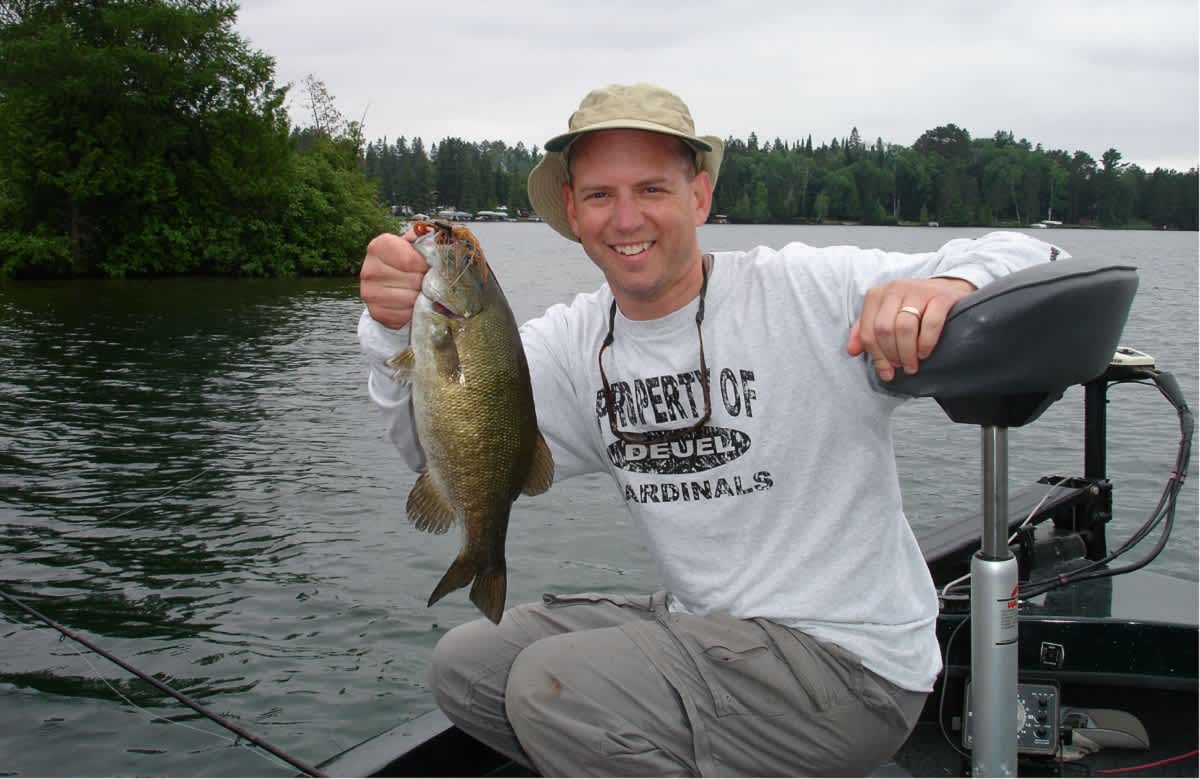Sneak and Peek for Spawners
Dave Maas 05.03.16

Warning: Some of what you’re about to read might sound off the wall, and implementing one or more of my five suggested tips could result in increased heckling from your boat buddies. That said, if you have skin thicker than that of an eelpout (Google it) and follow my advice, you’ll catch more and bigger bass and panfish this spring.
Dress Like Bonefish Bubba. With all due respect to today’s NASCAR-logoed bass pros, you’ll remain more hidden from fish eyes if you blend in with the sky and clouds by wearing light colors (powder blue, ash gray, off whites, etc.) head to toe.
Your hat should have a long bill to help reduce glare. If it provides sun protection on the sides and back, then so much the better. Think about it: Keeping the sun off your skin lowers your chance of skin cancer, which could mean a longer life and more days on the water.

Three Is Better Than One. Pack—and test—three different polarized lens colors each day in the boat regardless of the sky and water conditions. On high overcast days, amber lenses will probably be the ticket. Yellow lenses are often best during low light. And on bluebird afternoons, gray lenses could provide the best view. Don’t assume, test.
The best fishing glasses block sunlight and glare from entering through the sides, too. This isn’t a bad-man beauty contest, so choose shades that land the most fish, not the most compliments at the local watering hole. I own a handful of polarized glasses and they all work well in certain conditions. That said, if I had to choose just one, it’d be my amber-lens Action Optics.
Elevation Is Everything. Before I get more in-depth on this tip, please understand you must use commonsense; I shouldn’t have to add a lawyer-loving tag such as “Don’t try this at home.”
Assuming weather conditions are favorable, meaning relatively calm with no massive waves from nearby boaters, I suggest standing on a sturdy folding stool to improve your vision into the water. The one I use on the front casting deck of my boat has three steps at approximately 10, 20 and 30 inches. Most often I scout from the 20-inch step and then move to the 10-inch step or the boat deck itself to make a cast, retrieve a lure and set the hook. Wear a life jacket. Be safe.

Sneaky Smart. I’ve said this to fishing clients so many times I’m sure it’ll be engraved on my tombstone: If a fish sees the boat, it probably won’t bite. Now, I know what you’re thinking: Dave Maas doesn’t know jack. I remember one time when a five-pound largemouth . . .
Yes, my clients and I have caught dozens, hundreds—maybe a thousand—bass and panfish that were fully aware of my boat. It happens. But as a general rule, if you can be sneaky smart and present a lure to a fish without it seeing you or the boat, then the chance of said fish biting goes up considerably. Two items will help you sneak through the shallows in secrecy and stop on a dime after you find fish: a quiet/weedless trolling motor and a shallow-water anchor. I like Minn Kota and Talon; you decide for yourself.
Light Lines, Long Rods. It seems like you can’t read an article today without the author preaching the absolute necessity of using the latest and greatest super lines. Forgive my French, but that’s garbage. For sight-fishing in shallow water, spool up with inexpensive easy-casting mono. I prefer Trilene XL, but there are many other great choices, too. For sunfish and crappies, I use 4- or 6-pound-test. If crappies are especially large and/or near thick cover, then go to 8-pound. For bass, I rig spinning rods with 10-pound-test, and baitcasters with 12-pound.
A small jig suspended under a tiny float works great for targeting bedded gills. The same system works well for crappies hovering around submerged weeds, but if spawning slabs are holding tight to rushes, docks or brush, I prefer a more specialized approach. I mount a medium-size spinning reel on a 9-foot fly rod (8- or 9-weight) and flip 1/16-ounce crappie jigs into holes in the cover, or simply lower a jig vertically beside the cover as if using a cane pole. Jig brand doesn’t matter; experiment with colors. For spawning bass, my No. 1 lure is a 7-inch, unweighted Texas-rigged Berkley Power Worm (pumpkinseed). If the wind kicks up a bit, I’ll add a split-shot in front of the worm. Deadly.
The next time you hit the water with sight-fishing in mind, dress the part, find the best lens, stand on a sturdy stool, be sneaky smart and cast light lines and lures. And when (not if) you have success, be sure to share your grip-and-grin pics on OutdoorHub’s Facebook page for all to see.

